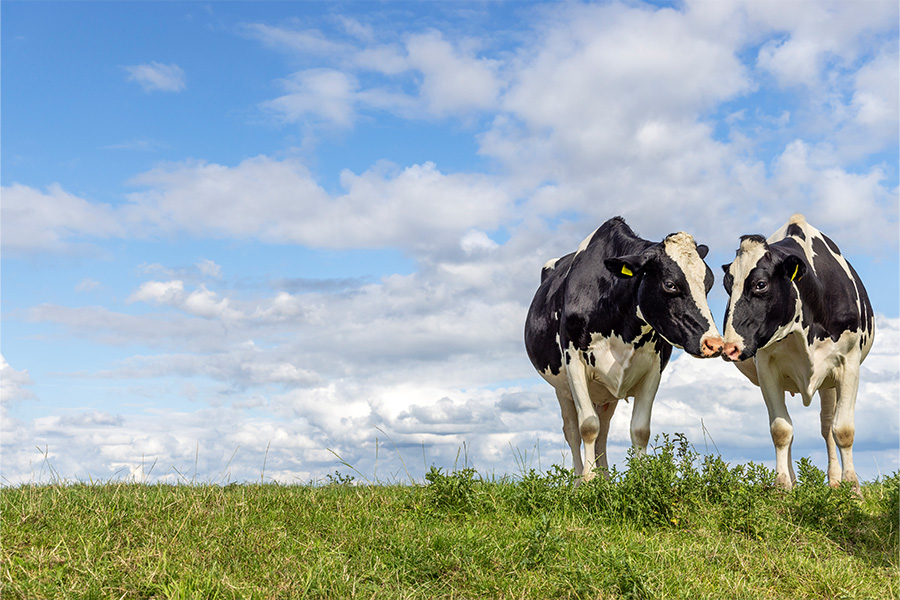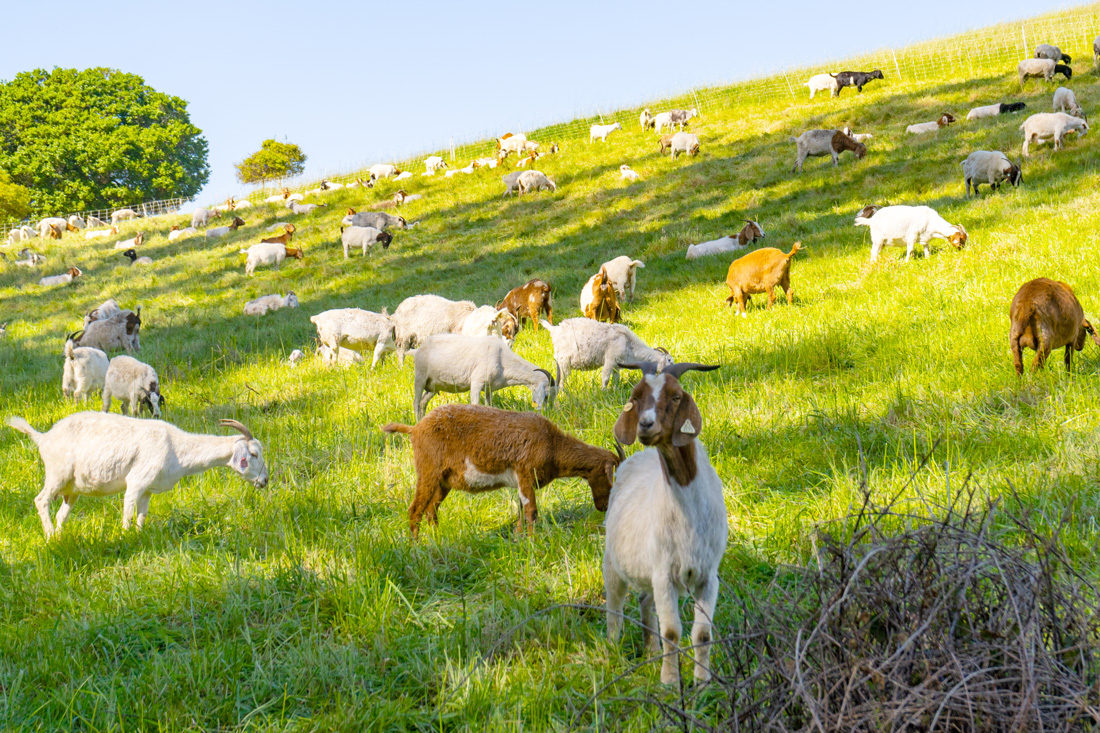Animal and Dairy Science
-

This publication provides reproduction benchmarks for Holstein herds processed by Dairy Records Management Systems. Some examples of using and applying benchmark values are provided; however, this publication should be viewed primarily as a comprehensive resource for reproduction benchmark values. These benchmarks will be useful to dairy producers, dairy managers, consultants, veterinarians and agribusiness representatives as a first step in the analysis of herd management practices.
Warren D. Gilson, Lane O. Ely, James W. Smith, and William Graves
|
-

Early identification and diagnosis of reproductive problems through a herd health program are an essential part of successful dairy management. A cow must be pregnant by 85 days postpartum to achieve a 12-month calving interval. This is the backbone of sound reproductive management in an economical dairy business. Many factors during the dry period, parturition and early lactation can lower reproductive efficiency. These include mastitis, cystic ovaries, lack of body condition, retained placentas and anestrus. These postpartum problems lengthen calving intervals and affect reproductive efficiency.
William Graves
|
-

When the time comes to examine a herd’s dairy reproductive management program, producers often want to discuss low conception rates. In most cases, however, inadequate heat detection is the much greater reproductive problem. Heat detection is the first step to getting an animal bred. According to DHIA records, producers in Georgia are only seeing a third of their heats. Missed heats are one of several factors that contribute to long calving intervals. By increasing the number of heats observed, it is possible to shorten the interval between calves.
William Graves
|
-

Problem identification is the first step in establishing objectives and goals to improve reproductive management in a dairy herd. Management is determining what must be done and achieving results through the efforts of yourself and your employees. Use the following worksheet to evaluate herd reproductive performance and set goals to improve your breeding strategies. Then develop a tactical plan to achieve these goals using the second worksheet. List those involved on your management team and their responsibilities.
William Graves
|
-

Goats are the most widely-dispersed meat animals and have been raised for centuries to provide meat, milk, fiber, cashmere and leather. Due to their small size, adaptability to harsh environments and availability, they have been more popular in nations lacking refrigeration, animal management skills and modern transportation. This publication deals solely with Spanish or meat-type goats in Georgia and covers their history, selection and management—from predator and disease control to reproduction and marketing.
Ronald E. Silcox
|
-

A good pasture and forage program can provide quality feed and normally will be the most efficient and economical means of providing a substantial part of equine rations. In Georgia, we are fortunate to have a mild climate, soils suitable for producing forages and a good selection of highly productive forage species. With careful planning and good management, adequate grazing can be supplied for up to 10 months of the year in most areas of the state. To many producers, the term “horse pasture” denotes grazing management and forage crops unique to horses. This is not the case at all. Because the horse is a herbivore, most forage crops commonly used for cattle can also be used to provide grazing for horses.
John G Andrae
|
-

Drought does not develop overnight but progressively over time. Proper management during a drought period can make or break a producer’s ability to stay in the cattle business. One main concern during a drought period is feeding and nutrition of the cow herd. Several problems could arise due to drought conditions. A good producer should stay alert for warning signs and avoid potentially damaging situations.
Carole Knight
|
-

Adjust rations for the dry matter (DM) content of each feed, especially when wet feeds, such as silage, are fed. Small changes in the DM content will change the nutrient profile of the ration. The potential results of not monitoring the DM content of wet feeds and adjusting rations accordingly are a combination of problems including decreased animal performance and feed efficiency and increased health problems and feed cost.
John K. Bernard
|
-

Research has demonstrated that proper dry-off methods are vital in promoting udder health during the nonlactating period and at calving. For high producing cows, it may be necessary to decrease dietary energy over the last 1-2 weeks of lactation by increasing fiber and eliminating grain. Abrupt cessation of milking is probably as good as intermittent milking with a diet change for low and medium producing cows; however, intermittent milking is recommended for high producing cows to decrease milk yield and minimize leakage at dry-off, which could lead to mastitis. First lactation cows should be given a 50- to 60-day dry period, but multiparous animals fare well with a 35- to 45-day dry period. Selective dry cow therapy with non lactating cow antibiotics plus teat seal is as effective as blanket dry cow therapy with non lactating cow antibiotics plus teat seal for cows with SCC less than 200,000/ml. However, blanket dry therapy with both products is recommended for cows that dry off with greater than 200,000/ml. It is important to follow recommended infusion techniques to preserve the protective components of teat canal keratin and the sphincter muscle. And lastly, use of coliform vaccines will enhance immunity over the dry period and reduce clinical coliform mastitis in early lactation. This publication address these topics in more detail in order to help producers prevent mastitis in their dairy herds.
Steve Nickerson
|